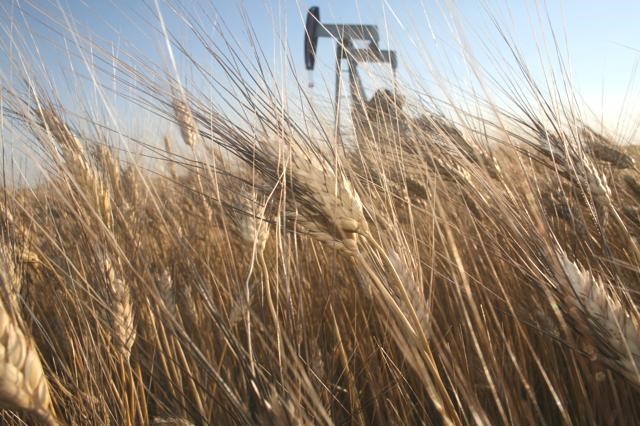Rain showers caused some delays with harvest operations in the southeast region, but the harvest progressed some to 86 per cent complete, up from 76 per cent the week before, according to Sask. Agriculture’s crop report.
Producers were able to be back in the fields after the first rainfall, and then rain returned again on Friday. Some producers have been able to finish their harvest, while others have such crops as soybeans and flax left to complete.
Broken down by area, crop district 2A (Weyburn area) is 82 per cent done, and district 3ASE is 92 per cent completed. Provincially harvest is 75 per cent done combining, with 16 per cent swathed or ready to straight-cut.
For Weyburn area producer Mark Bratrud, he is about 80 per cent done harvest, with only his soybeans and canola left to finish off for this year.
“The weather was pretty cooperative up until the last week or so. There’s been a lot of progress,” he said, pointing out that crops like soybeans take longer to be ready for harvest.
Once the ground dries up enough, the harvest in this area could be mostly done with about five or six days of sunny weather, he added.
Asked how this year’s harvest went, Bratrud said, “The yields are not as bad as we thought they would be. The lentils were a little disappointing, and cereals are below our more recent averages, but they’re not devastating.” Canola crops were also below average for yield.
On the other hand, the quality of crops has been really good in this region, partly because moisture-related diseases were not a factor, such as fusarium in wheat and durum crops.
For barley growers, there won’t be many crops grown in this area that will be malting quality, said Bratrud, adding the dryness of this summer hurt the yield significantly.
Overall, he said, “we have about 60 per cent of what we had last year, but the quality is much better.”
In the southeast overall, producers have indicated that yields are average to below-average, depending on the amount of moisture over the year. Yields vary greatly, and many producers are reporting significantly lower yields than normal in crops like soybeans, canola and durum. As Bratrud reported in the Weyburn area, in the southeast, quality is much better than in the past few years, and most crops have come off in good to excellent shape.
Topsoil moisture conditions improved greatly over the past week in the region, with showers reported generally throughout the southeast.
The RM of Tecumseh in the Stoughton area reported 12 mm of rain prior to the weekend, the RMs of Weyburn and Brokenshell had 10 mm each, Wellington had 5.5 mm, Laurier RM had rainfalls ranging from 13 to 14.3 mm, and the RM of The Gap had 13 mm of rain.
The topsoil moisture for crop land, prior to the rainfall on Friday and Saturday, was rated as 25 per cent adequate, 28 per cent short and 47 per cent very short. For hay land and pastures, topsoil moisture was rated as 14 per cent adequate, 30 per cent short and 56 per cent very short.
Heading into the winter months and looking ahead to the spring, Bratrud noted that this summer basically used up all of the reserve moisture most of the land had, and a significant soaking will be needed, preferably with fall rain.
“We’ll need a good two or three-inch soaking to replenish the soil moisture, or else have a significant snowfall this winter,” he said.
Many pastures have been over-grazed and have not grown much in the past few months. Significant rainfall will be needed to replenish what was lost from the hot and dry weather of the summer.
The majority of crop damage this past week is attributed to strong winds and a lack of moisture. There were a few nights with frost reported, but damages were expected to be minimal as the remaining unharvested crops were advanced enough.




